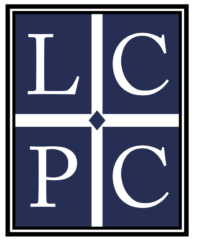Back To Pain Management Services
Back Pain
overview
causes
symptoms
Treatment
Reviews
Overview
Back pain is one of the most common reasons people seek medical help or miss work. Back pain is a leading cause of disability worldwide.
Fortunately, measures can help prevent or relieve most back pain episodes, especially for people younger than age 60. If prevention fails, simple home treatment and using the body correctly often will heal the back within a few weeks. Surgery is rarely needed to treat back pain.
Causes
Back pain often develops without a cause that shows up in a test or imaging study. Conditions commonly linked to back pain include:
- Muscle or ligament strain. Repeated heavy lifting or a sudden awkward movement can strain back muscles and spinal ligaments. For people in poor physical condition, constant strain on the back can cause painful muscle spasms.
- Bulging or ruptured disks. Disks act as cushions between the bones in the spine. The soft material inside a disk can bulge or rupture and press on a nerve. However, a bulging or ruptured disk might not cause back pain. Disk disease is often found on spine X-rays, CT scans or MRIs done for another reason.
- Arthritis. Osteoarthritis can affect the lower back. In some cases, arthritis in the spine can lead to a narrowing of the space around the spinal cord, a condition called spinal stenosis.
- Osteoporosis. The spine’s vertebrae can develop painful breaks if the bones become porous and brittle.
Symptoms
Back pain can range from a muscle aching to a shooting, burning or stabbing sensation. Also, the pain can radiate down a leg. Bending, twisting, lifting, standing or walking can make it worse.

Treatment
Medications depend on the type of back pain. They might include:
- Pain relievers. Nonsteroidal anti-inflammatory drugs (NSAIDs), such as ibuprofen (Advil, Motrin IB, others) or naproxen sodium (Aleve), might help. Take these medications only as directed. Overuse can cause serious side effects. If pain relievers you can buy without a prescription don’t help, your health care provider might suggest prescription NSAIDs.
- Muscle relaxants. If mild to moderate back pain doesn’t improve with pain relievers, a muscle relaxant might help. Muscle relaxants can cause dizziness and sleepiness.
- Topical pain relievers. These products, including creams, salves, ointments and patches, deliver pain-relieving substances through the skin.
- Narcotics. Drugs containing opioids, such as oxycodone or hydrocodone, may be used for a short time with close medical supervision.
- Antidepressants. Some types of antidepressants — particularly duloxetine (Cymbalta) and tricyclic antidepressants, such as amitriptyline — have been shown to relieve chronic back pain.
A physical therapist can teach exercises to increase flexibility, strengthen back and abdominal muscles, and improve posture. Regular use of these techniques can help keep pain from returning. Physical therapists will also provide education about how to modify movements during an episode of back pain to avoid flaring pain symptoms while continuing to be active.
Procedures used to treat back pain may include:
- Cortisone injections. If other measures don’t relieve pain that radiates down the leg, an injection of cortisone plus a numbing medication into the space around the spinal cord and nerve roots might help. A cortisone injection helps decrease inflammation around the nerve roots, but the pain relief usually lasts only a month or two.
- Radiofrequency ablation. In this procedure, a fine needle is inserted through skin near the area causing the pain. Radio waves are passed through the needle to damage the nearby nerves. Damaging the nerves interferes with pain signals to the brain.
- Implanted nerve stimulators. Devices implanted under the skin can deliver electrical impulses to certain nerves to block pain signals.
- Surgery. Surgery to create more space within the spine is sometimes helpful for people who have increasing muscle weakness or back pain that goes down a leg. These problems can be related to herniated disks or other conditions that narrow the openings within the spine.
Reviews on our treatments
“I was looking for a Social Media Course to expand my career horizon. A friend of mine suggested to learn from Steve’s online courses and it really worked for me.”

Flora BakerNew York
“A fantastic and very engaging course. All of the information offered by Steve was completely practical, relevant and presented in an easy, digestible and interesting way.”

Glen StephensLondon
“This course was a breakthrough in my knowledge of digital marketing. The content is comprehensive and of great quality, engaging and interactive.”

Terry HigginsBerlin
Previous
Next

